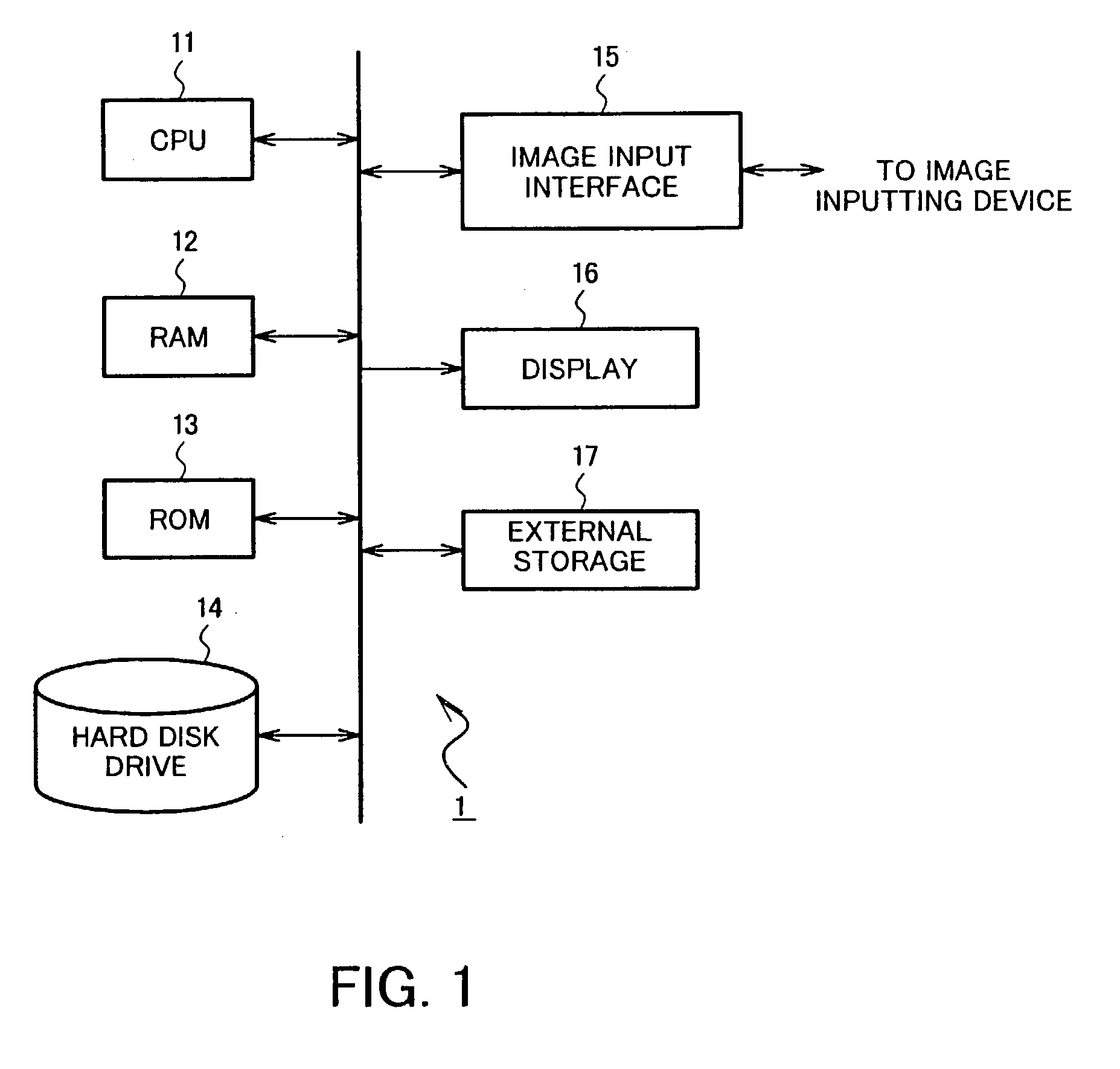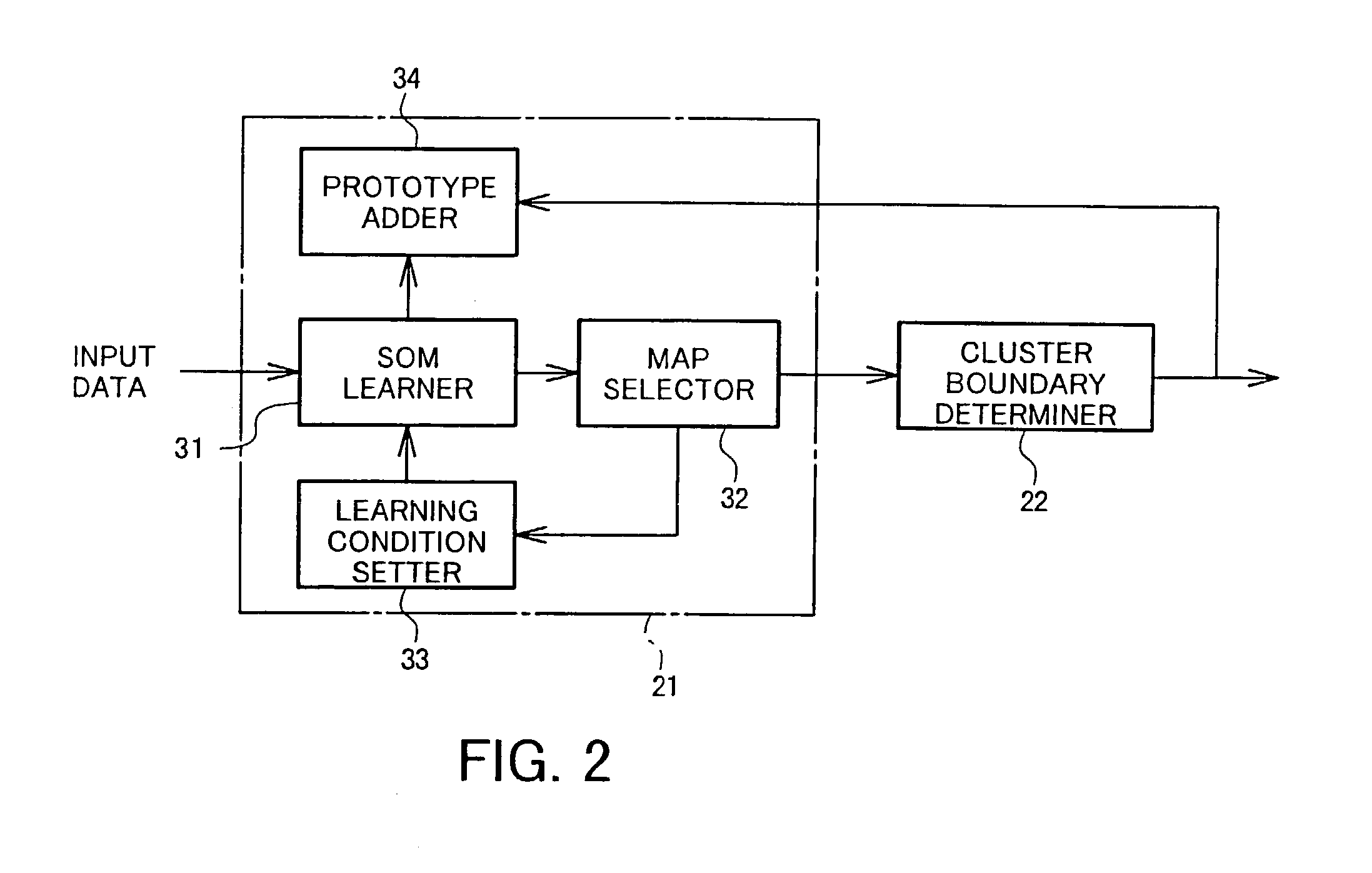Data classifier using learning-formed and clustered map
- Summary
- Abstract
- Description
- Claims
- Application Information
AI Technical Summary
Problems solved by technology
Method used
Image
Examples
Embodiment Construction
[0044] A preferred embodiment of the present invention will now be described with reference to the drawings. In the following description, the embodiment is illustrated using an example wherein image data is classified, but the present invention is not limited to image data classification and can also be applied to classification of data from other sensory organs, such as taste data, or to measurement data such as experimental results.
[0045] As shown in FIG. 1, a data classifier according to the preferred embodiment of the present invention comprises a CPU 11, a RAM 12, a ROM 13, a hard disk drive 14, an interface 15 for image input, a display 16, and an external storage 17 which are connected to each other via a bus. In other words, the data classifier 1 according to the embodiment is realized as a software classifier operating on commonly used personal computers. This software can be stored and distributed in storage media such as CD-ROMs and DVD-ROMs, or, alternatively, may be do...
PUM
 Login to View More
Login to View More Abstract
Description
Claims
Application Information
 Login to View More
Login to View More - R&D
- Intellectual Property
- Life Sciences
- Materials
- Tech Scout
- Unparalleled Data Quality
- Higher Quality Content
- 60% Fewer Hallucinations
Browse by: Latest US Patents, China's latest patents, Technical Efficacy Thesaurus, Application Domain, Technology Topic, Popular Technical Reports.
© 2025 PatSnap. All rights reserved.Legal|Privacy policy|Modern Slavery Act Transparency Statement|Sitemap|About US| Contact US: help@patsnap.com



